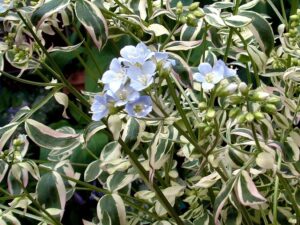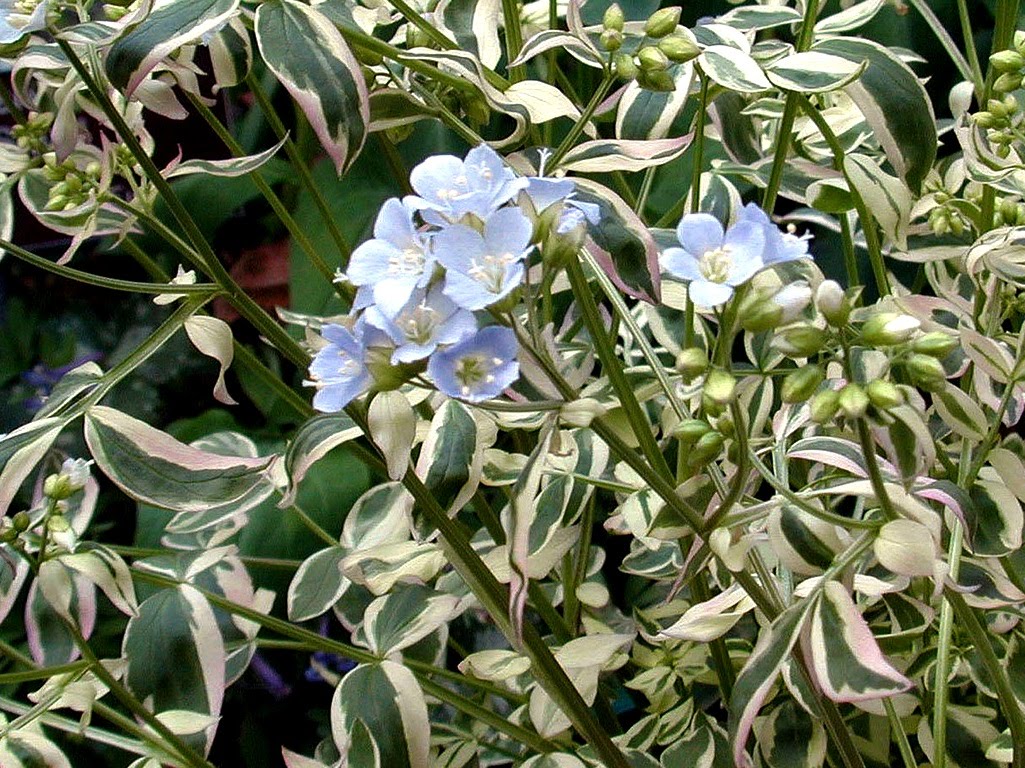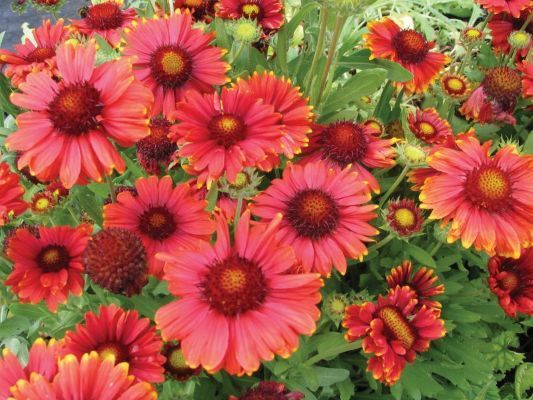Description
 Polemonium reptans ‘Stairway to Heaven’
Polemonium reptans ‘Stairway to Heaven’
Creeping Jacob’s Ladder
USDA Zone: 3-9
Simply the best variegated Jacob’s Ladder ever introduced. This forms a low mound of medium-green ferny leaves, each leaflet strongly edged in creamy white and flushed with pink during cooler spring weather. Clusters of lightly fragrant violet-blue bells rise taller in mid to late spring. New fresh leaves continue to appear all season, keeping this variety looking good from spring through late fall. Ideal for edging a shady border or growing beside a woodland path. Appreciates average to moist soil conditions. Afternoon shade is recommended in warm summer regions. Trim back the flower stems as soon as blooming is finished. Introduced by the New England Wildflower Society. USPP#15187, CPBR#3113: unlicensed propagation prohibited.
Sun Exposure Partial Shade
Soil Type Normal or Sandy or Clay
Soil pH Neutral or Alkaline or Acid
Soil Moisture Average or Moist
Care Level Easy
Flower Color Light Blue
Blooming Time Late Spring Early Summer
Foliage Color Light Green Variegated White
Plant Uses & Characteristics
Accent: Good Texture/Form Alpine & Rock
Attracts Butterflies Attracts Hummingbirds
Border Containers
Cut Flower Deer Resistant
Edging Fragrant
Massed Specimen
Wild Flower Woodland
Flower Head Size Small
Height 10-16 inches
Spread 16-18 inches
Foot Traffic None
Growth Rate Medium




Reviews
There are no reviews yet.